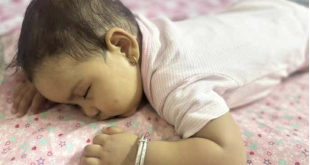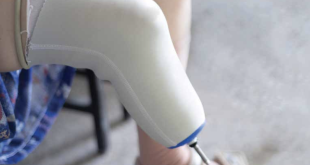
In recent years, Nepal has undergone significant demographic changes. The number of elderly has drastically increased. Many have been experiencing an “empty nest syndrome” due to children moving away for education and better opportunities. This may lead to a overall feeling of sadness and loneliness. Same could be true for retired individuals with working children. This, combined with a sedentary lifestyle brought about by age, is an unhealthy concoction leading to deterioration of both physical and mental well-being of the elderly population.
As we age, there is a decline in the function of our neuromuscular system. Both our central and peripheral nervous systems are affected. This results in a decrease in the speed of our movements, strength, coordination, balance, postural stability, and fine and gross motor skills. This in turn makes it difficult to perform simple activities like walking, grasping, balancing, etc., making simple everyday tasks difficult for the elderly, and brings about dependence and increase in cases of falls and other household accidents.
The physical and mental wellness in the elderly determines their quality of life. When I was little, I would watch my great grandmother sit patiently and make battis, count tiljau, sort akshyata, and make sweets for her daily worship. She was always happy, always patient with her long line of grandchildren and great-grandchildren, was healthy, sharp, and had kind words for everyone. She lived a content and healthy life till she was a hundred and three years old. These daily pooja rituals gave her a sense of purpose, an important place in the family, fulfillment, a sense of achievement, and balanced mind and body.
The making of battis not only requires concentration, but upper extremity movement as well as coordinated eye movement. The following of the precise movement of the hands with the eyes slowly, and the rhythmic breathing, may have effects similar to tai chi, which various studies have shown not only to improve visual perception, but also balance and coordination, along with a decrease in stress levels.
Modern science recommends ‘bead therapy’ in the elderly to improve eye-hand coordination and fine motor skills, as well as to bring about therapeutic benefits to the mind. Bead therapy is a proven common practice used by many physical and occupational therapists, which consists of counting beads or stringing beads to create a pattern. Counting of prayer beads, while chanting, is used in various religious traditions, providing similar benefits. Other religious activities providing the benefits of bead therapy are counting tiljau and making of flower garlands for worship.
Making sweets and pooja ritual requires remembering the ingredients, process of making, and the steps in doing pooja. These improve memory and cognitive skills. Walking to nearby temples for darshan is a form of socializing; this, along with offerings to tulsi and peepal, encouraged mobility. Rotating prayer wheels offer similar benefit. It is important in older age to stay active and mobile. Various studies have proven that an active elderly is less susceptible to falls, owing to better reaction time and motor control.
Satsangs, bhajans, kirtans also allow people to interact, chant together and meditate. Spiritual musical sessions are an integral part of various religions and cultures. The act of coming together to praise a higher power in one voice is believed to have restorative effects and bring about serenity and rejuvenation. It is believed to help us reach a higher level of human consciousness.
The concept of meditation has been an essential part of many religions before modern psychology described its effectiveness. Every pooja ritual begins with dhyana, or mindful meditation. There are countless benefits of meditation like stress reduction, control on anxiety and negative thoughts, patience, self awareness, peace and an overall betterment of emotional health.
All these religious rituals not only improve physical strength, encourage mobility, help with coordination and balance, enhance motor skills but are also therapeutic to the mind bringing about a sense of wellbeing, and peace. Eye-hand coordination, balance, a certain level of muscle strength and agility are essential to carry out activities of daily living in everybody, especially in the older generation. These are important to help maintain independence and decrease a sense of helplessness. The physical and mental benefits brought about by the daily rituals aids the elderly to carry out their daily activities of living like maintaining basic hygiene, feeding and dressing themselves, staying relatively active, independent, and emotionally strong.
Visualizing it with this new perspective, various religious practices, which these days often seem mundane, repetitive, time consuming, obsolete, and simply bothersome, seem to have an important role to play in the overall wellbeing of an aging individual. These were not merely chores to be completed, but a way of life for generations before us. They put their faith in God to keep them healthy, and by servicing the divine, they were helping themselves stay healthy in body and mind.
 Medicosnext
Medicosnext




